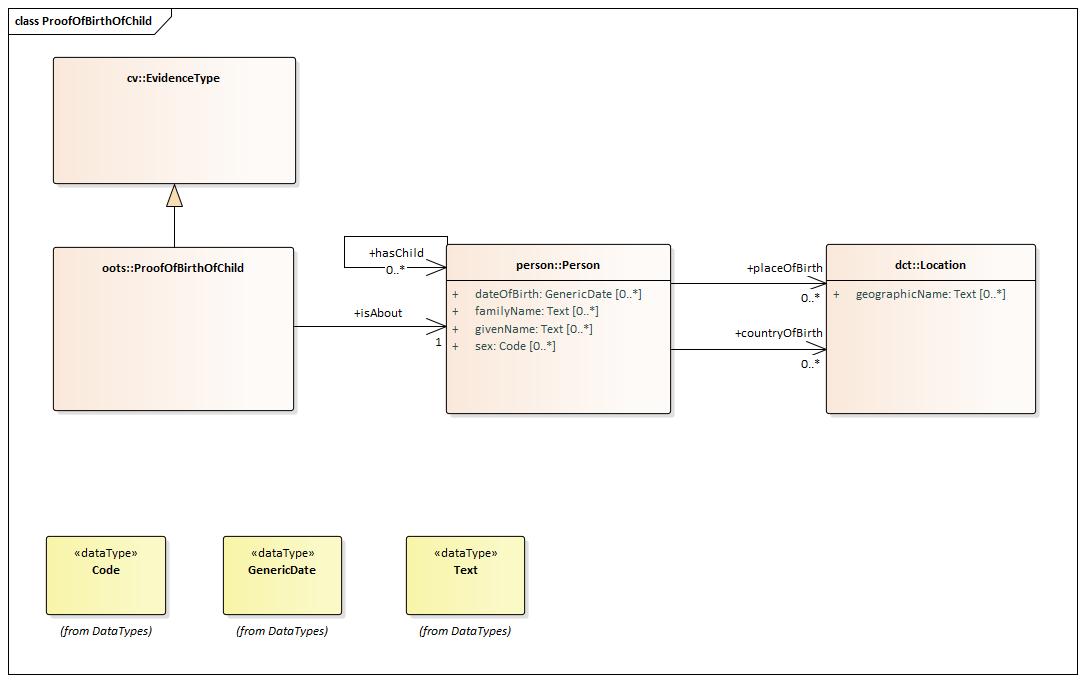![[o]](html/callout.png)
|
country of birth
|
Location
|
0..*
|
The country in which the Person was born.
|
The Location Class has two properties: a Geographic Name and a Geographic Identifier. Plain codes like "DE" should be provided as values for Geographical Names whereas URIs should be provided as value of the Geographical Identifier. Ideally, provide both. Providing a simple country name is problematic and should be avoided whereas using a standardised system that allows the use of a code list for country names has a lot of potential for increasing semantic interoperability. Known diversity that one has to deal with when exchanging country names between different communication partners without relying on an agreed code list are: (a) long form vs. short form of a country name (e.g. Federal Republic of Germany vs. Germany), (b) different languages (Italy vs. Italia), (c) historic name vs. current name (Burma vs. Myanmar), (d) ambiguity of similar sounding countries (Republic of the Congo vs. Democratic Republic of the Congo). The Publications Office of the European Union recommends and uses ISO 3166-1 codes for countries in all cases except two: use 'UK' in preference to the ISO 3166 code GB for the United Kingdom; use 'EL' in preference to the ISO 3166 code GR for Greece. See Publications Office list of countries for details of the OPOCE's full list of countries, codes, currencies and more. Where a country has changed its name or no longer exists (such as Czechoslovakia, Yugoslavia etc.) use the ISO 3166-3 code.
|
|
![[o]](html/callout.png)
|
date of birth
|
GenericDate
|
0..*
|
The point in time on which the Person was born.
|
The date of birth could be expressed as date, gYearMonth or gYear, example:
- 1980-09-16^^xs:date
- 1980-09^^xs:gYearMonth
- 1980^^xs:gYear
|
|
![[o]](html/callout.png)
|
family name
|
Text
|
0..*
|
The hereditary surname of a family.
|
Usually referring to a group of people related by blood, marriage or adoption. This attribute also carries prefixes or suffixes which are part of the family name, e.g. "de Boer", "van de Putte", "von und zu Orlow". Multiple family names, such as are commonly found in Hispanic countries, are recorded in the single family name property so that, for example, Miguel de Cervantes Saavedra's family name would be recorded as "de Cervantes Saavedra".
|
|
![[o]](html/callout.png)
|
given name
|
Text
|
0..*
|
The name(s) that identify the Person within a family with a common surname.
|
Usually a first name or forename. Given to a person by his or her parents at birth or legally recognised as 'given names' through a formal process. All given names are ordered in one property so that, for example, the given name for Johann Sebastian Bach is "Johann Sebastian".
|
|
![[o]](html/callout.png)
|
has child
|
Person
|
0..*
|
Connects a person to (one of) their children.
|
|
|
![[o]](html/callout.png)
|
place of birth
|
Location
|
0..*
|
The Location where the Person was born.
|
The Place of Birth and Place of Death are given using the Location class which is associated via the appropriate relationship. The Location Class has two properties: (1) the geographic name of the place, which is given as a string such as "Amsterdam" or "Valetta" and (2) an identifier, such as a geonames URI http://sws.geonames.org/2759794 (which identifies Amsterdam) or http://sws.geonames.org/2562305 (which identifies Valetta). The use of identifiers is preferred as these are unambiguous, however, public sector data typically uses simple names to record places and this is fully supported.
|
|
![[o]](html/callout.png)
|
sex
|
Code
|
0..*
|
The organism's biological sex
|
The recommended controlled vocabulary for this property is the sex authority table of the Publications Office.
|
|

![[o]](html/callout.png)